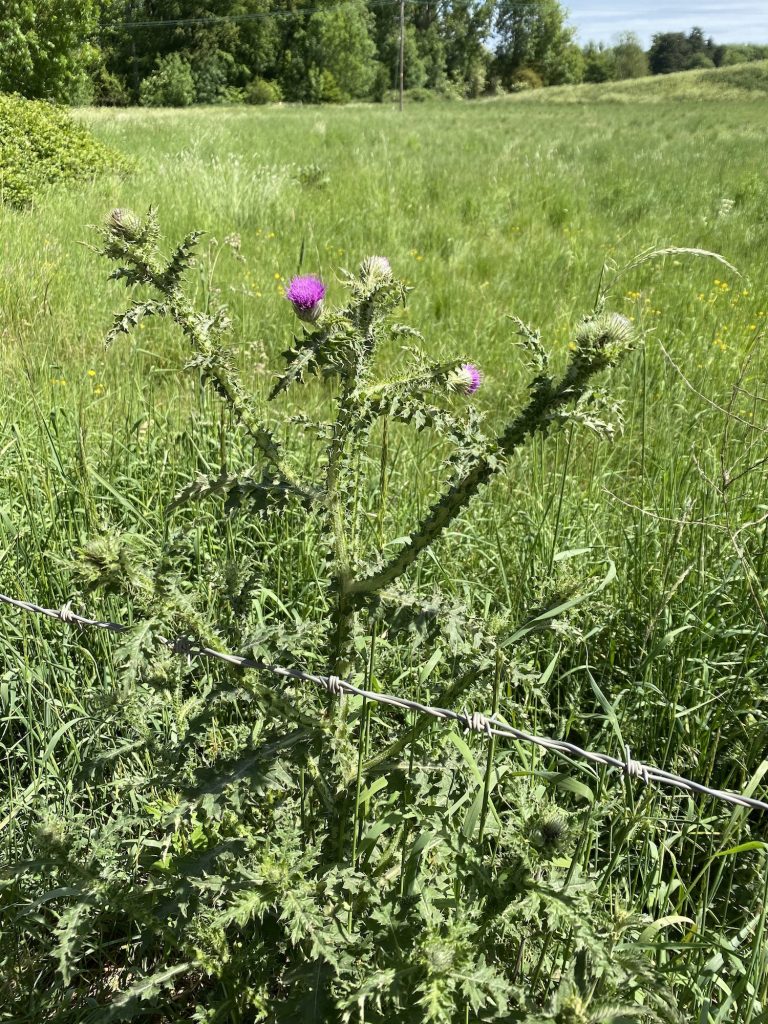Control thistles to optimise grass growth, experts advise
25th June 2020
As exceptionally dry weather has meant poor early grass growth in many parts, forage supply may not meet demand for grazing cattle and sheep.

Top well-grown thistle plants and spray the regrowth two to three weeks later.
As exceptionally dry weather has meant poor early grass growth in many parts, forage supply may not meet demand for grazing cattle and sheep.
Corteva Agriscience’s weed biology specialist Dr Nicola Perry says fields filled with 10 per cent thistles produce 10 per cent less grass to feed to livestock.
“Spraying thistles with an effective translocated herbicide specifically designed to kill the roots will help optimise grass growth from now on,” she explains.
Creeping thistle and spear thistle are the most common and damaging thistles in the UK, both competing with grass for space, light, nutrients and water. They reduce the amount of grazing available and are unpalatable to stock.
In sheep flocks, they can lead to a greater incidence of orf, a viral skin disease spread through open wounds from ewes and lambs pricked by the thistles.
“Spraying with Thistlex at a rate of one litre/ha in 200-400 litres of water will give outstanding control of creeping and spear thistles, as well as other weeds such as common nettle, fat hen and mayweed,” Dr Perry says. “The herbicide gets right down into their large vertical and horizontal root systems.”
In mid-summer it may pay to top well-grown grown thistle plants and spray the active re-growth two to three weeks later.
Animals must be taken out of the field when it is sprayed but can return seven days after treatment, so long as there is no foliage of poisonous weeds such as ragwort present.
